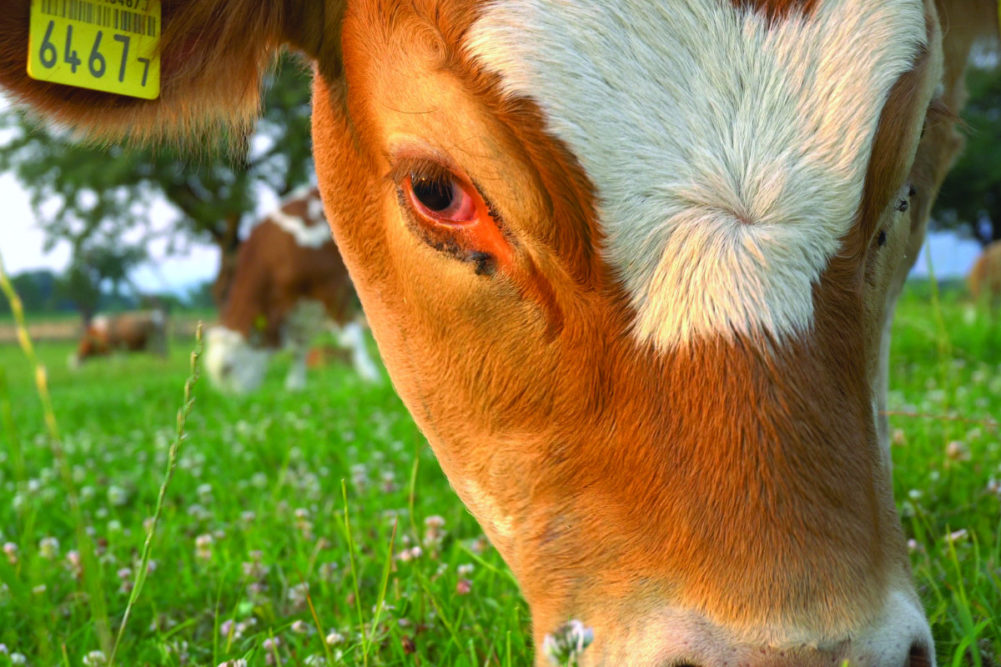In 2019, before the global pandemic took hold, the Cattlemen’s Beef Board (CBB) and the National Cattlemen’s Beef Association (NCBA) formed a Long Range Plan Task Force charged with creating a five-year plan to provide insights and strategic direction to the entire beef industry. After an analysis of the beef industry’s strengths, weaknesses, opportunities and threats to the industry, the lack of a national traceability program emerged as a weakness.
Regulators and cattle producers believe the capability to trace the whereabouts of livestock is critical to securing supplies of animal protein during an animal disease outbreak. The US Department of Agriculture (USDA) expressed its intent to modernize regulations around traceability, while producer organizations and their members have studied the role of a national animal disease traceability system in the long term viability of the cattle industry.
Roadblocks to regulation
The USDA has prioritized the development of a modern federal and state traceability system that tracks animals from birth to slaughter. Technology used will be affordable and enable quick tracing of sick and exposed animals to stop disease spread, the agency said. The proposed modern traceability system the agency envisions will:
- Advance the electronic sharing of data among federal and state animal health officials, veterinarians, and industry.
- Make the transmission of data more efficient through the use of electronic identification tags for animals requiring individual identification.
- Enhance the ability to track animals from birth to slaughter through a system that allows tracking data points to be connected; and
- Elevate the discussion with states and industry to work toward a system where animal health certificates are electronically transmitted from private veterinarians to state animal health officials.
A key component of the agency’s plan is implementation of radio frequency identification (RFID) tags. Cattle are transported nationally and can change ownership through multiple transactions; any traceability system should be unobtrusive to the flow of sales.
“You need an ultra-high frequency in order to read those tags at the speed of commerce in our livestock auction environments,” said Chelsea Good, vice president of government and industry affairs and legal, Livestock Marketing Association. Good was speaking as a panelist at an Agricultural Business Council of Kansas City seminar on traceability.
The Animal and Plant Health Inspection Service (APHIS) of USDA said in March the agency would use the rulemaking process for future action related to RFID implementation. The decision came after some cattle producers opposed implementation of RFID tags because of cost concerns.
In 2019, USDA had announced a plan to transition to RFID tags from metal ear tags for cattle and bison. The agency’s rationale behind the move was to enhance animal health officials’ ability to locate specific animals during a disease outbreak. The transition was scheduled to begin Dec. 31, 2019, with the agency planning to stop providing free metal ear tags. The deadline to reach full implementation of the plan was Jan. 1, 2023. But in the same year, R-CALF USA, a rancher organization, and four ranchers from Wyoming and South Dakota sued USDA-APHIS in federal court to stop implementation of the federal RFID livestock traceability program.
Ultimately, APHIS did not finalize the proposed rule to implement RFID as the official ear tag for use in interstate movement of cattle but did leave open the possibility of using RFID tags in the future.
“While the need to advance a robust joint Federal-State-Industry Animal Disease Traceability (ADT) capability remains an important USDA-APHIS objective, we will take the time to reconsider the path forward and then make a new proposal, with ample opportunity for all stakeholders to comment,” APHIS said.
“As we undertake this reconsideration of whether or when to put new requirements in place, we will encourage the use of Radio Frequency Identification (RFID) devices through financial incentives that are also consistent with suggestions we have received from cow/calf producers and others,” the agency continued. “We continue to believe that RFID devices will provide the cattle industry with the best protection against the rapid spread of animal diseases, as well as meet the growing expectations of foreign and domestic buyers.”
Producers’ progress
Organizations like the Cattlemen’s Beef Board, the Federation of State Beef Councils and the National Cattlemen’s Beef Association also have invested resources into adopting an industry wide cattle traceability system with an eye toward growing global demand for and, consequently, exports of US beef.
Proponents of RFID-enabled traceability in the beef industry believe adopting such a system presents an opportunity to meet expectations among global consumers and governments for traceability that provides more information and verification of production practices, according to a report by the Long Range Task Force. An industry-wide traceability system could also help producers manage potential disease outbreaks which are an ongoing threat to the beef industry’s long-term viability.
“Based on the study recommended by the previous Beef Industry Long Range Planning Task Force and completed by World Perspectives in 2018, approximately 61% of beef exports come from countries with nationally significant traceability systems in place,” the task force said in its analysis. “In fact, beef exported by India and the United States represents the majority of global beef exports produced by countries without nationally significant traceability systems in place.
“The demand among some beef importing countries for traceability coupled with the ongoing threat of a nationwide lock-down, in the case of an infectious disease outbreak that cannot be quickly traced and contained, underscores the importance of implementing an effective traceability system for the US beef industry,” the analysis continued. “The task force believes when it comes to traceability, the time for researching, testing and debating is over and it is now time for action.”
Matt Teagarden, chief executive officer, Kansas Livestock Association and moderator of the Agricultural Business Council of Kansas City panel discussion, noted that “...other countries have, to some extent, been forced into traceability because of the disease issue. We almost got there in 2003-2004 with our case of BSE,” he said. “I think the opportunity for us and one we’ve identified is we can design a system that fits us as an industry. Those other countries, it was top-down from the government, and it has worked, but maybe it has not been optimal.”

Available options
The beef industry needs to work through several issues before implementing a national livestock traceability system, Good said. These include logistics, labor and sharing of costs and benefits throughout the beef supply chain.
Springdale, Ark.-based Tyson Foods and Cargill in Minneapolis are addressing some of these challenges by supporting US CattleTrace, which was formed by multiple state cattlemen’s organizations to develop a national infrastructure for animal disease traceability in the US cattle industry. Tyson Fresh Meats, the beef and pork subsidiary of Tyson Foods, became the first beef processor to invest in the program in March. In June, Cargill announced its participation in US CattleTrace as an official packer member and committed to investing $250,000 in the program over the next two years.
US CattleTrace uses the data it collects to track individual animals from the farm of birth and to each location the animals travel before reaching a processor for harvest. Ear tags with an electronic chip collect the minimal data necessary, including an individual animal identification number, a GPS location, and date and time through ultra-high frequency technologies.
Glen Dolezal, PhD, vice president, protein, Cargill, said the company achieved a 95% read-rate on low-frequency ID tags. High-frequency ID tag readers were installed at two Cargill processing plants, one in Texas and another in Kansas. However, read rates are averaging about 80%, he said. Still, Cargill engineers are working closely with US CattleTrace to find solutions to the lower read rates, but the company did find that the high-frequency tags are susceptible to water. The tags are electronic but not battery operated, meaning they can last the lifetime of the animal.

Dolezal said Cargill believes a livestock traceability system would offer important benefits to the beef industry such as improved supply chain transparency, market access, especially for exports, enhanced global competitiveness, reduced costs for animal disease testing and surveillance, food safety and opportunities for livestock management efficiency.
“If you have individual animal identification in place, we feel great about sharing individual carcass data with producers to make better feeding management decisions,” he said.
Data security is critical to maintaining the trust of cattle producers and packers. JBS USA paid $11 million in ransom to hackers that breached the company’s servers in North America and Australia.
Grund said data collected from the ear tags is tiered and siloed which means there are limits to the information that approved users can share. US CattleTrace also uses a username, password and IP-restricted website and two-factor authentication as a layered approach to information security.
“Privacy is paramount for ranchers,” Grund said.
Traceability is important for animal health and market access, proponents said. However, the use of ear tags for disease traceability versus marketing attributes of beef products should be distinguished, Good said.
“I think there’s a difference, and it’s an important difference, between traceability from a disease perspective and traceability from a value-added perspective,” she said. “I think it’s important to keep those things separate. You do see a lot of producers that are involved in value-added systems – non-hormone treated, things like that – where they are choosing to identify animals and keep that identification throughout the chain and receive a premium for that.”


